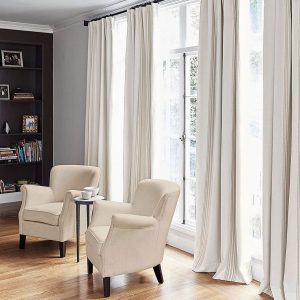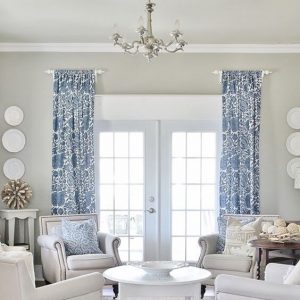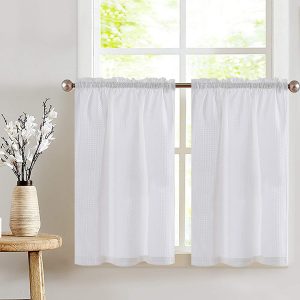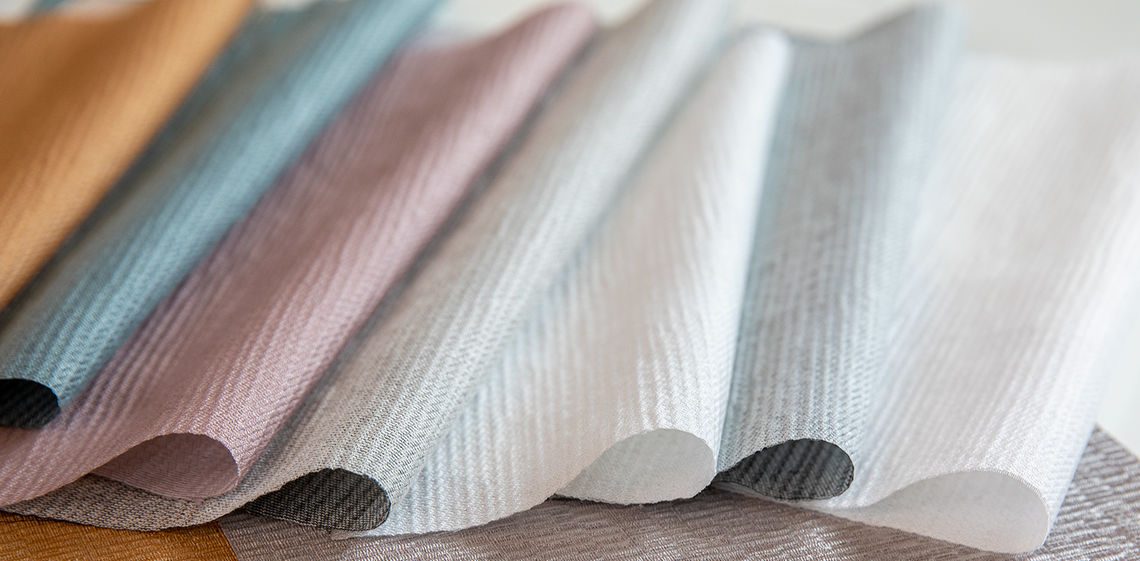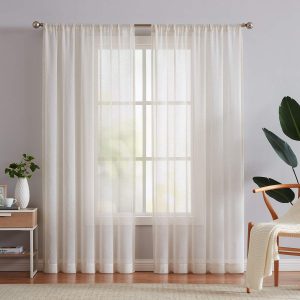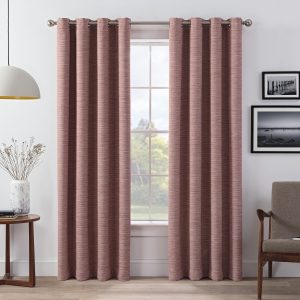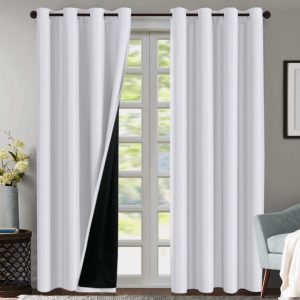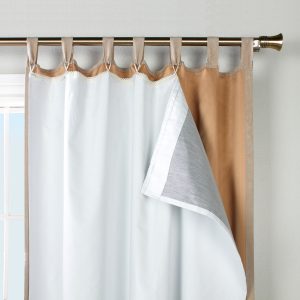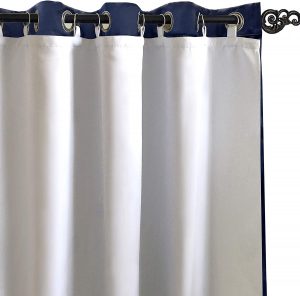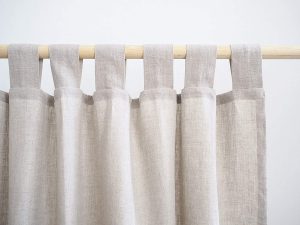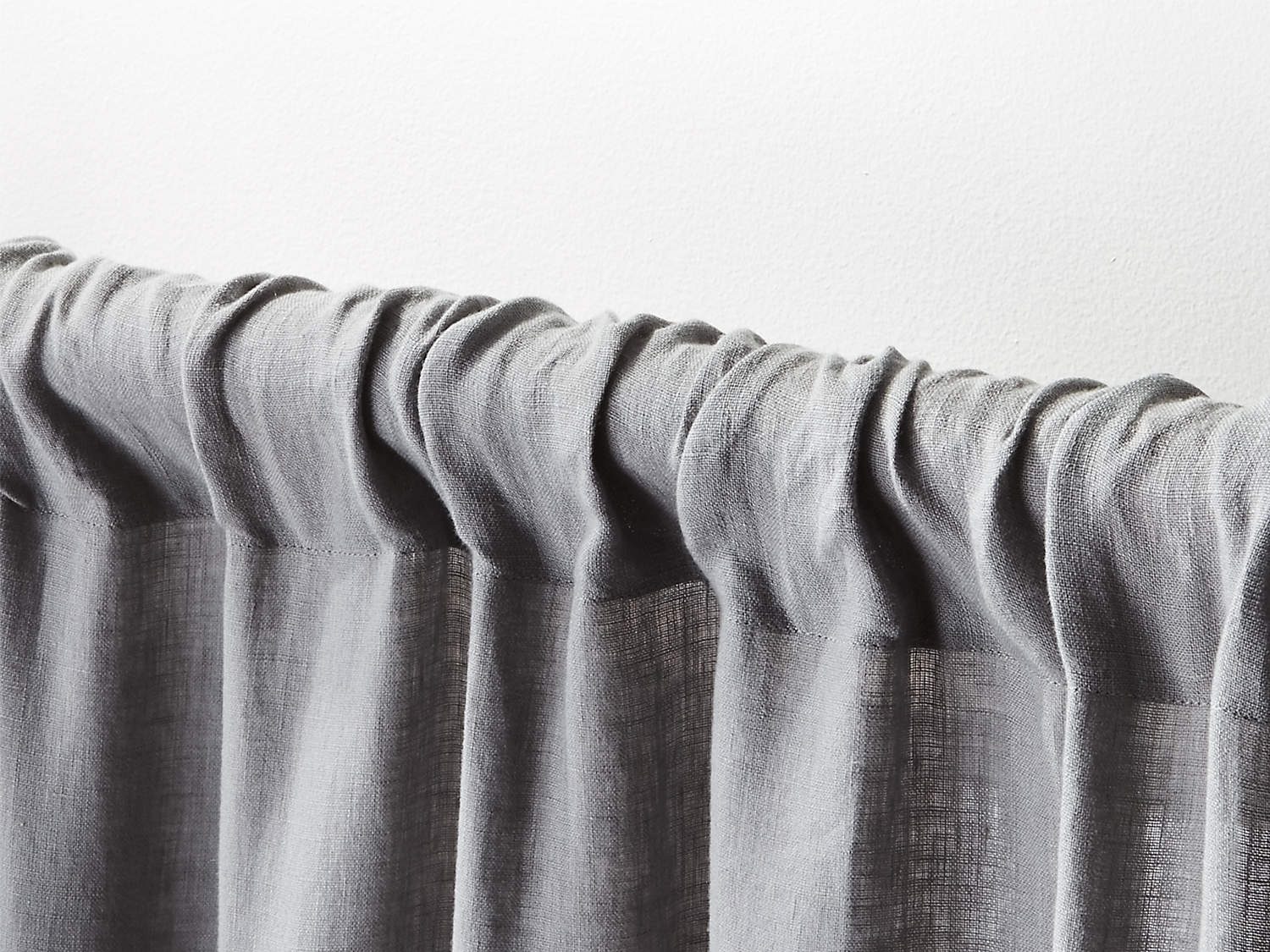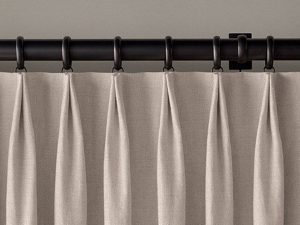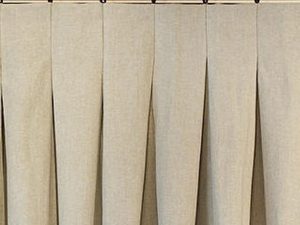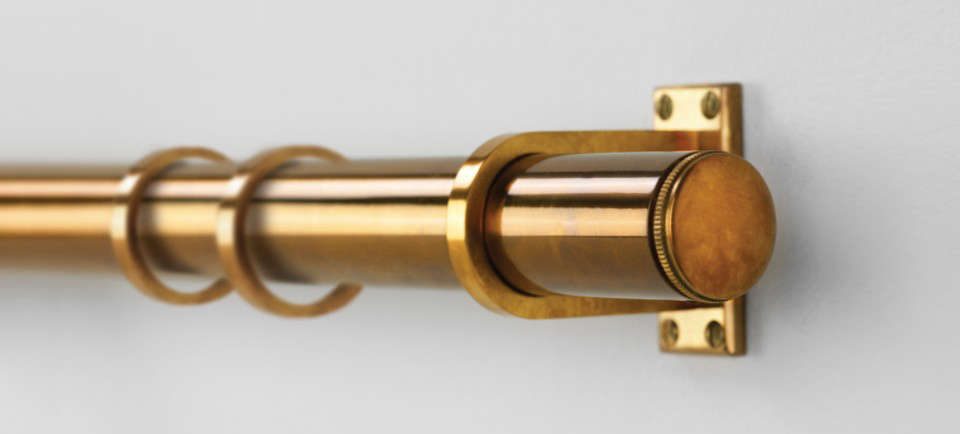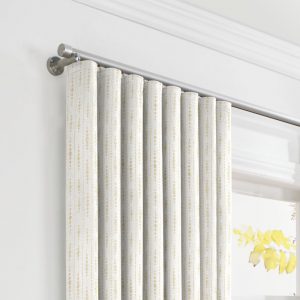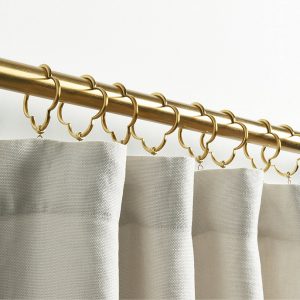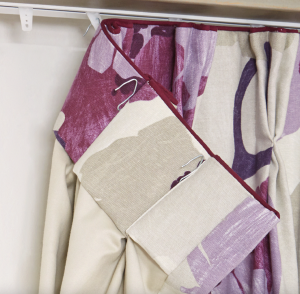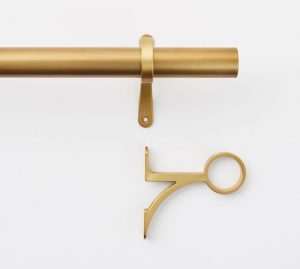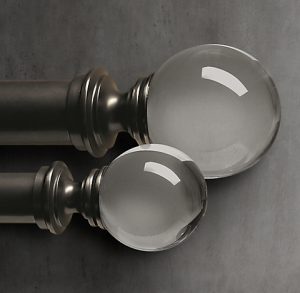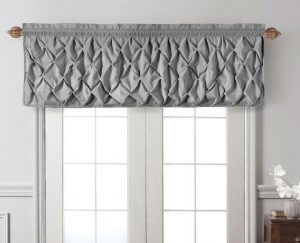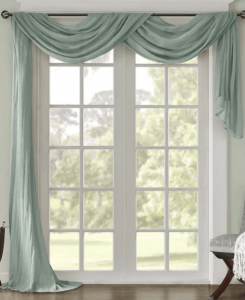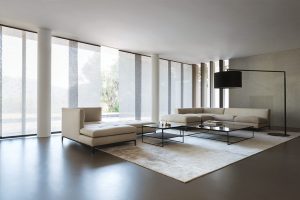Tag: Window Treatments
Drama-free Drapery: Your Detailed Guide for Understanding Window Design Basics
Wednesday, June 2, 2021 at 9:53pm

Window treatments can be very complicated, but we are going to simplify them for you! In this article, you’ll learn about drapery styles, fabrics, hardware, and more; plus, we will walk you through which ones to use and when. Let’s get started!
First, it’s essential to consider window treatments as “installed decorative elements” that should be highly functional while communicating your design style. In particular, drapery can be incredibly overwhelming with all of the available options and details to consider, but never fear, DezignSpace is here! 😉
Let’s go through them one at a time:
Types of Drapery
Moving Panels
Somewhat self-explanatory, these are fabric panels that hang above a window or door on either side and can be moved across for coverage.
Fixed/Side Panels
These are quite simply non-moving fabric panels and are typically used as trim or in conjunction with another treatment.
Cafe Panels
Café panels are short-tier curtains that cover only the bottom half of a window or can be used on French doors.
Fabric
Let’s talk fabrics for a moment. Your selection here should be based on a few key considerations: desired light level, privacy, and style.
Fabric Weight/Opacity:
Sheer
Simply put, the lighter the weave, the brighter the room. Sheers create a light and airy feel while offering a bit of privacy. They look lovely on their own or when paired with heavier drapes on a double curtain rod.
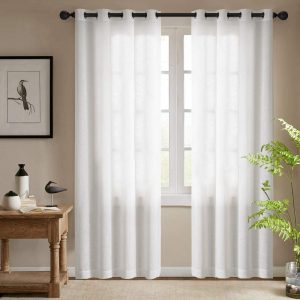 Semi Sheer
Semi Sheer
Semi-sheer curtains are slightly more opaque than regular sheers. Choose these if you want to let a fair amount of light in but prefer a bit more privacy.
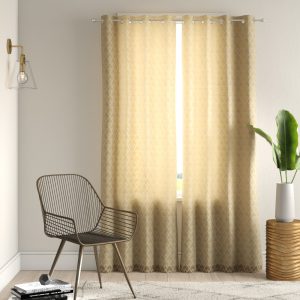 Semi-Opaque
Semi-Opaque
The next step up from semi-sheer, semi-opaque is a heavier weave that offers greater privacy while still letting in a fair amount of light.
Solid
An opaque or solid fabric that allows for slight light diffusion, for example, velvet or canvas.
Light Blocking
As the name implies, light-blocking curtains offer the highest level of darkness by blocking incoming light—a perfect choice for media rooms, bedrooms, and nurseries.
Let’s not forget about your fabric lining options, like Blackout and Thermal:
Blackout Liner
You can add a blackout liner to any curtain to transform them into a light-blocking style. Perfect for media rooms, bedrooms, and nurseries.
Thermal Liner
Windows are often a significant source of heat loss, so to help keep those energy bills in check, you should consider thermal curtain liners. Thermal liners can be used both in hot and cold climates. They act as an insulator, and as a bonus, they create a sound barrier – perfect if you live in the city or next to a busy street.
Top Styles
Tabs
Curtain tabs are loops of fabric along the top of a panel that allows easy installation over a rod. The back tab or hidden tab style is perfect for creating a polished look while concealing the curtain rod.
Rod Pocket
Incredibly versatile, this type works well across most design styles, although it’s usually seen in traditional spaces. It comes in various styling options; you can slip the curtain rod through the pocket for a simple, clean look or use clips to create pleats. The rod pocket pairs better with lightweight fabrics like sheers than it does with heavier-weight fabrics.
Grommet
Crisp, with well-defined folds and a simple design, this window treatment lends well to the contemporary style. Easy to install, the rings (grommets) are embedded within the curtain top and glide over the rod. Grommet rings are available in many finishes, although it’s usually best to match the rod’s finish. Keep in mind that this style allows the curtain rod to be visible, so make sure to choose an attractive option.
Pleats
Pleats are folds in the drapery fabric that give it structure and fullness. Pleats come in several different styles, like the French pleat (AKA Pinch pleat) and the Inverted box pleat (detailed below). They are typically seen in traditional and transitional designs and can be single, double, or triple, with the fullness increasing along with the number of pleats.
Inverted Box Pleat
Elegant in style but not too stuffy, this design creates more casual-looking folds than the other pleat versions. Don’t let its informal look fool you–this style is not meant for a lot of opening and closing—sort of a look-but-don’t-touch situation.
Hardware
Of course, if you’ve selected drapery as a window treatment, you are going to need something to hang them up with, and you know what that means…you guessed it! MORE choices to make!
When it comes to window treatment hardware, there’s no shortage of options here either:
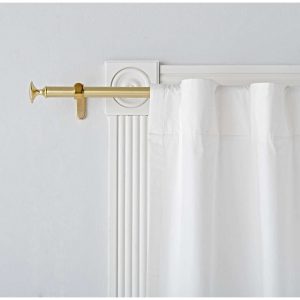 Single Rods
Single Rods
As you might imagine, a single rod is a single bar with which you thread grommets, rings, and pocket curtains (more on those later.) They can be straight while resting on wall brackets or curved and mounted directly into the wall at either end (called French rods.) Straight rods use finials, which are decorative caps placed at either end and come in a wide variety of styles.
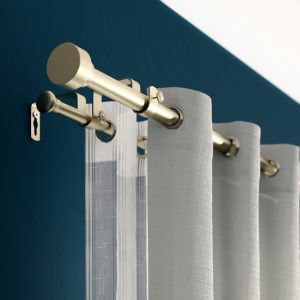 Double Rods
Double Rods
Double rods function similarly to single rods, the main difference being that there are two rods instead of one. They enable you to layer your window treatments for greater light versatility. (i.e., sheers paired with heavier-weight curtains. )
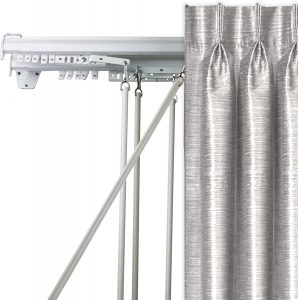 Traverse Rod
Traverse Rod
A window more than 36″ wide typically requires the use of additional support brackets in the middle of the rod, which in turn, prevents the curtains from moving all the way across. In situations where this isn’t ideal, you should use a traverse rod. A traverse rod allows curtains to easily glide the window’s full width via a pull cord, giving you full coverage while preserving the fabric. You can even customize the direction you want the curtains to open- from the left, right, or center.
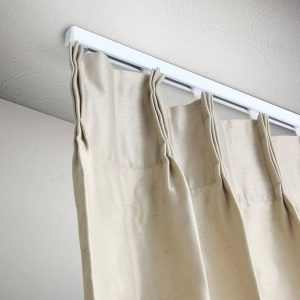 Ceiling-Mounted Track
Ceiling-Mounted Track
Ceiling-mounted tracks provide a clean, minimalist look while adding a sense of height and drama. They are incredibly versatile and help solve a variety of design dilemmas. For example, if you have circular-shaped ceilings or curved walls, there are flexible ceiling tracks that will bend to your space’s shape. You can also use ceiling-mounted tracks to hang draperies in front of patio doors, as there typically isn’t any wall space for the other mounting methods. Ceiling-mounted tracks can be installed in a drapery pocket or reveal.
Ripplefold
Are you a bit OCD about getting your curtains perfectly spaced and lying juuuust right? Enter the Ripplefold! Installation takes patience- a system of snaps and carriers creates each fold while securing the panel to the track. The result? Lush, full-looking curtains with precisely uniform folds.
Rings
Clip rings use clips to attach a drapery panel to rings that slide along a curtain rod. If you’re looking to add a little more length to your drapery, rings are a great way to do this, as they add 1-2 inches in length.
PRO TIP: Before you go all-in for ring clips, make sure you factor in the weight of your curtain fabric. For example, this hardware will not support heavier fabrics like velvet.
Hooks
Also called drapery pins or pleater hooks, these hooks are used to hang pinch-pleats from a traverse rod or tabbed rings on a round rod.
Brackets
The unsung heroes of drapery design, brackets play a critical role in window treatment installation. Simply put, brackets are mounted into the wall and support the curtain rod and panels. Which brackets you choose will largely depend upon your drapery style; for example, if you love the layered look that a double rod provides, you’ll need to select double brackets vs. single brackets.
For further details on brackets and mounting hardware, be sure to check out How to Install Window Treatments in The Library!
Are you still with us? I’m glad you stuck around because it’s time to accessorize! ✨
Accessories
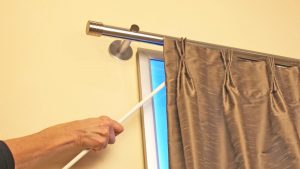 Pull Baton
Pull Baton
A pull baton or curtain wand enables you to pull your curtain panel easily across the window without having to touch the fabric. The type of drapery, rods, and hardware will determine which style of wand you need. Pull batons are usually used on heavier drapery vs. sheers.
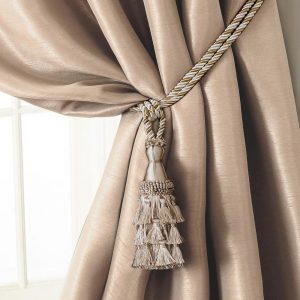 Tiebacks
Tiebacks
Tiebacks are both decorative and functional in that they coordinate with your curtains while tying them back to let in additional light. They can be made of fabric, cord, or really anything that suits your décor scheme. Any tieback hardware you select should stylistically tell the same design story.
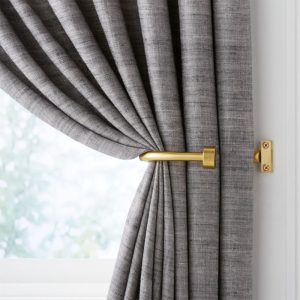 Holdbacks
Holdbacks
Holdbacks differ from tiebacks in that they are metal and mounted to the wall next to the curtain, generally one-third of the way up from the bottom. Just like tiebacks, any holdback hardware you select should be cohesive stylistically.
Finials
Finials not only look pretty capping the end of a curtain rod, but they serve the vital purpose of preventing your drapes from slipping off and falling to the floor. They come in endless styles and finishes; some opt for a seamless look with the curtain rod, whereas others choose a more elaborate design.
Valances
Either used alone or layered atop other panels, a valance is a section of fabric that conceals the window treatment hardware. They can be simple in structure or pleated to add formality.
Swags
A swag is a layer of fabric draped or wrapped around a curtain rod that creates a romantic and glamorous effect. Swags can be used as a standalone window treatment or in combination with other panels. When used alone, sheers are a popular choice as the light material lays softly and beautifully.
You made it! Now that you know about all these fantastic options, it’s time to make design decisions. To help you get started, ask yourself the following three questions:
How much light/privacy do I want?
What is the size of the window?
What is my design style?*
Your answers will help narrow down your choices and get you started on the road to window treatment success!
*So, you know what you like but don’t know what it’s called? To get headed in the right direction, take this quiz: What Window Treatment Style Are You? Here are a few design styles just for fun:
 TRADITIONAL
TRADITIONAL
Tends to be more detailed and elaborate, with intricate pleating/top details, with trims, patterns, accent fabrics, detailed valances, and plenty of decorative hardware.
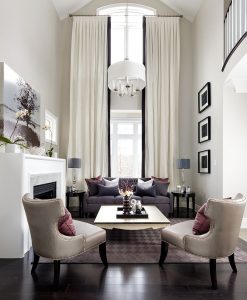 TRANSITIONAL
TRANSITIONAL
It is similar to traditional but with a more subdued palette, less detail, solids vs. patterned fabrics, and less intricate hardware.
CONTEMPORARY
Minimal details, no pleats, solid, lighter-weight fabrics in architectural colors, sleek hardware, ceiling mounted.
For a deep dive into these design style “super categories,” check out the Design Style Spotlights: Traditional, Transitional, and Contemporary
Videos
It doesn’t have to end here! Are you up for even more details about window treatments? You animal! We love it!
Here are two super useful videos that will turn you into a window whiz in no time!
What You’re Doing Wrong with Windows and How to Fix it
Think you’ve got what it takes to pass our Curtain Call quiz? Let’s find out!
How-to Guides
How to Measure Window Treatments
Shop
Need shopping help? Check out our recommended vendor list:
-
International
Canada:


